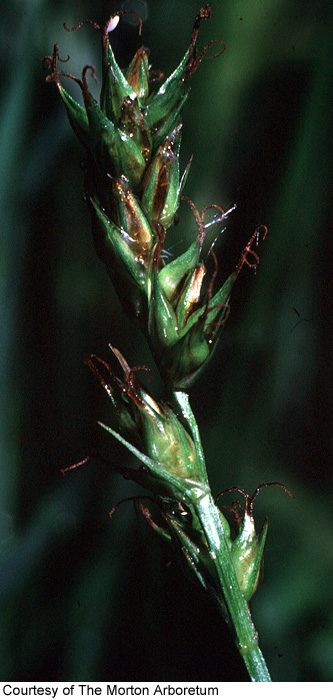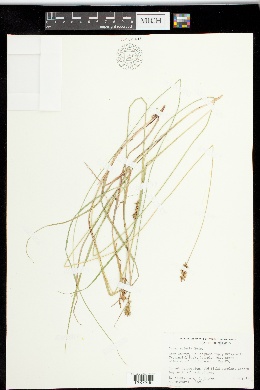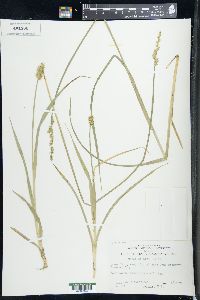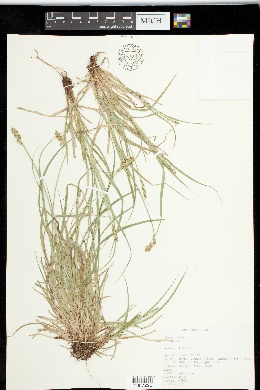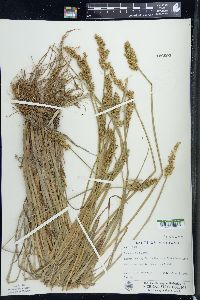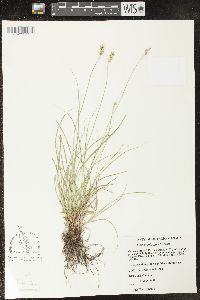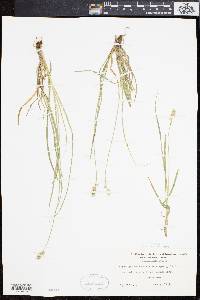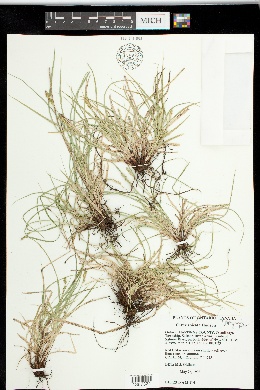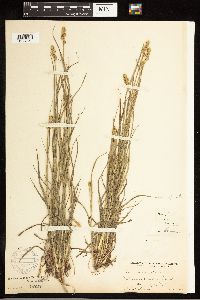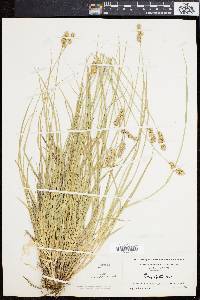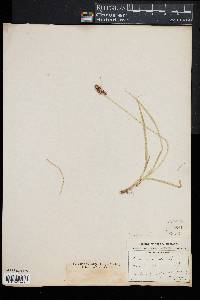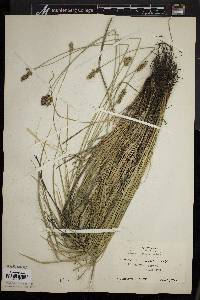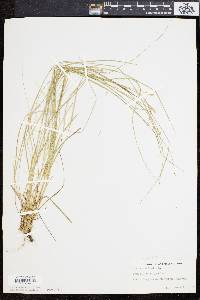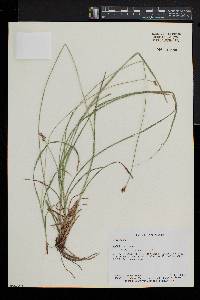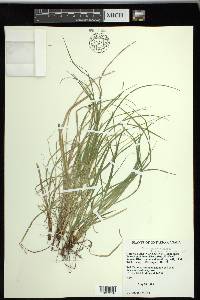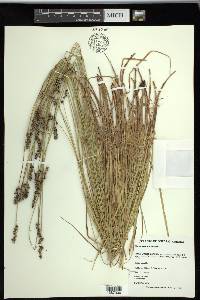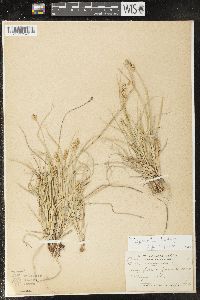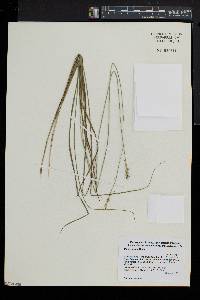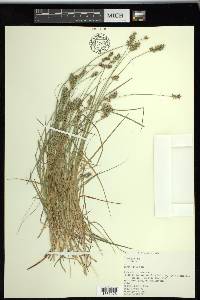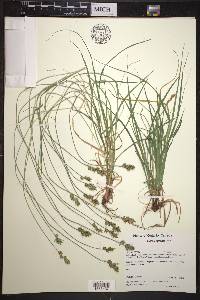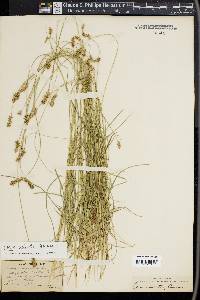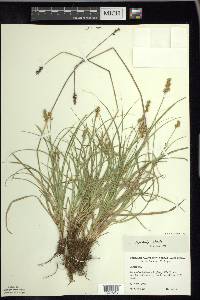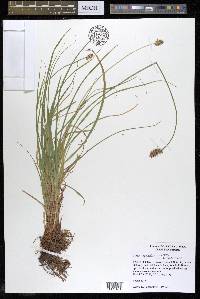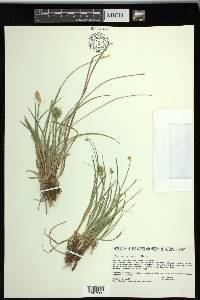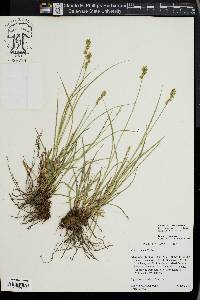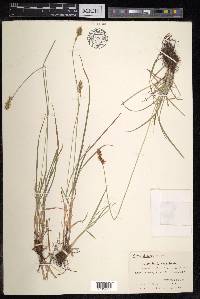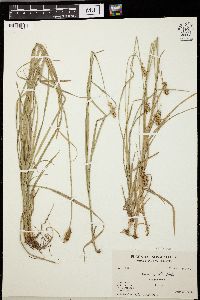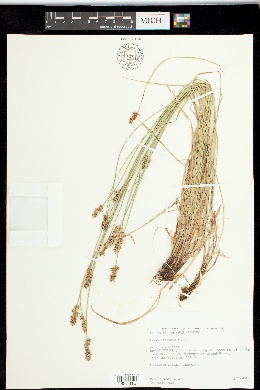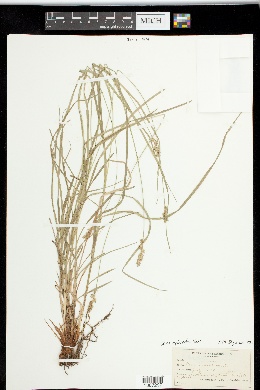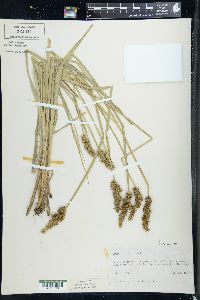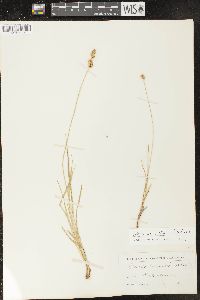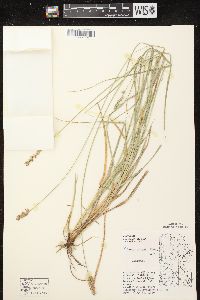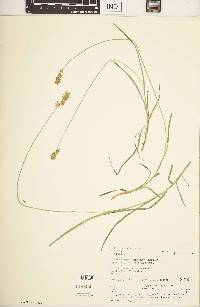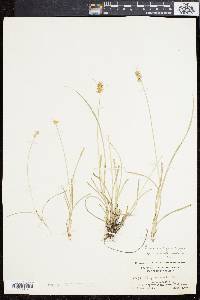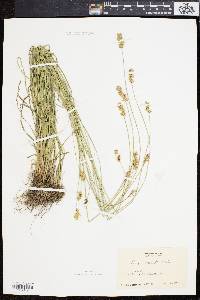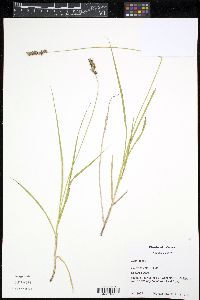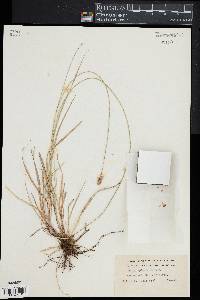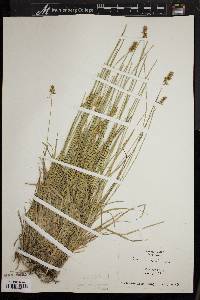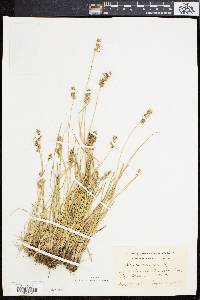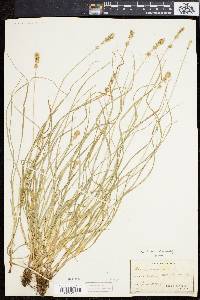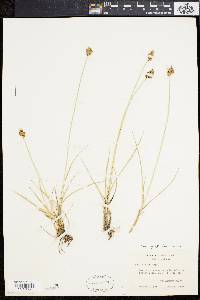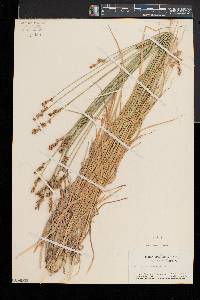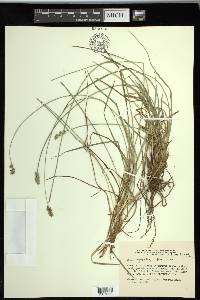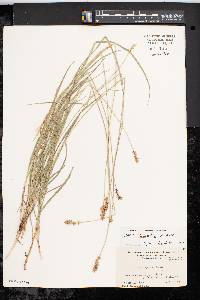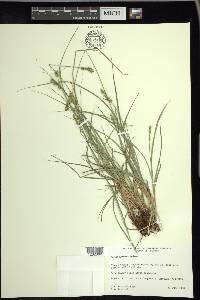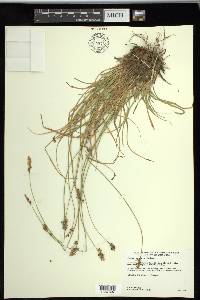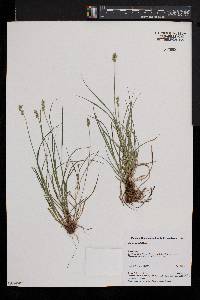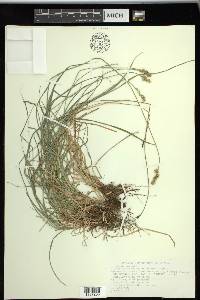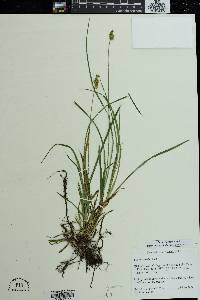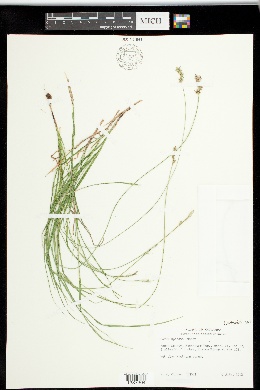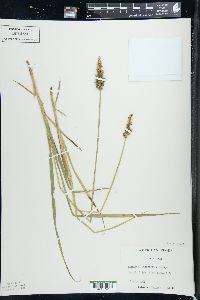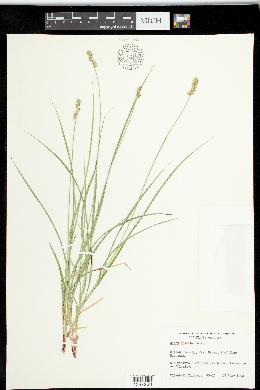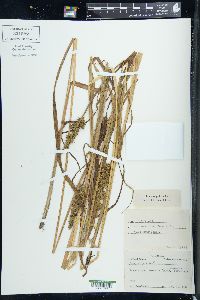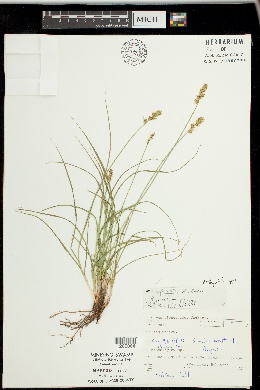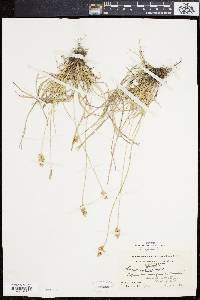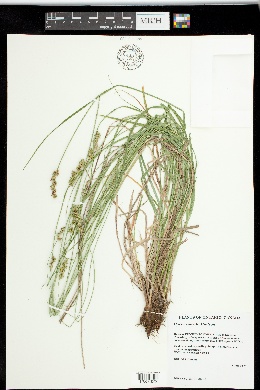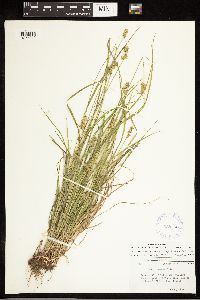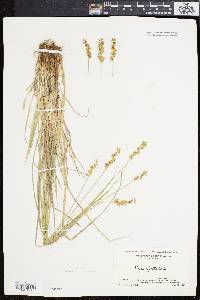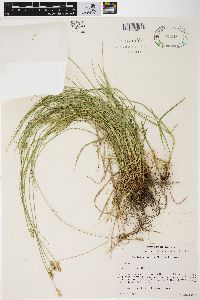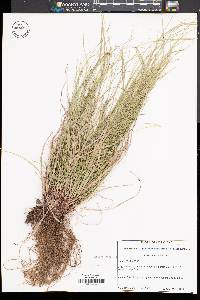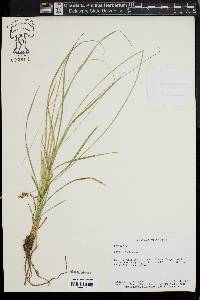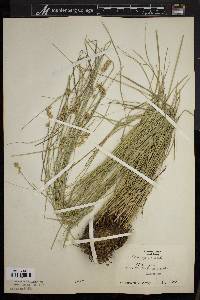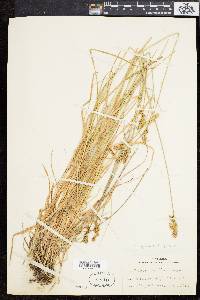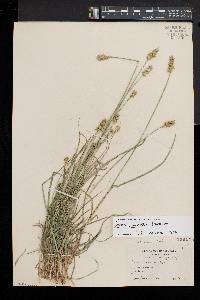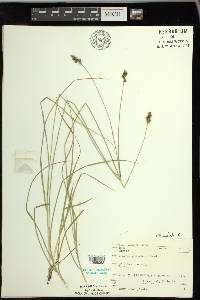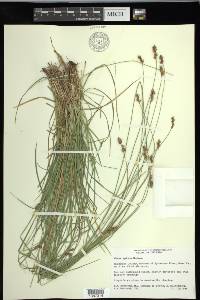Carex spicata
|
|
|
|
Family: Cyperaceae
Prickly Sedge
|
Plants without conspicuous rhizomes. Culms 10-85 cm, 1.8-2.2 mm wide basally, 0.5-0.9 mm wide distally; basal scales and sheaths usually red or purple tinged. Leaves: sheaths tight, green, fronts hyaline; ligules (3.5-)4-8 mm, longer than wide; widest leaf blades 2-4 mm wide, often papillose adaxially. Inflorescences with 3-8 spikes, 1-4 cm × 6-10 mm; proximal internodes as long as or slightly longer than proximal spikes; proximal bracts to 2 cm; spikes with 5-10 spreading to ascending perigynia. Pistillate scales brown with green 1-3-veined center, lanceolate to ovate, 3.2-4.5 × 1.7-2.2 mm, body slightly shorter and slightly narrower than perigynium, apex acuminate to short-awned. Anthers 1.5-2.5 mm. Perigynia greenish brown finally becoming black and glossy, veinless or to 7-veined abaxially, 4-5.5 × 2.2-2.4 mm, base of body somewhat spongy, thickened, margins serrulate distally; beak 1.5-2 mm, apical teeth 0.3-0.6 mm. Achenes suborbiculate, 2-2.3 × 2 mm. 2n = 58. Fruiting late spring-early summer. Fields, pastures, lawns; 0-300 m; introduced; N.S., Ont.; Conn., Del., D.C., Ill., Ind., Maine, Mass., Mich., N.H., N.J., N.Y., Ohio, Pa., R.I.; Europe; w Asia. Carex spicata is common in some areas and almost certainly under-recorded. The reports of C. spicata from Virginia are erroneous. The red or purple coloration, though often sparse and highly localized at the base of the plant, is diagnostic for Carex spicata, which is one of the few species in subg. Vignea possessing such coloration.
Densely cespitose, the stems slender, 2-6(-10) dm, usually conspicuously exceeding the lvs; roots and often the basal sheaths and base of stems purplish-tinged; lvs thin, 2-3 mm wide, with a lanceolate, acute ligule longer than wide; infl cylindric, 2-3.5 cm; spikes 3-10, androgynous, contiguous, subglobose, 5-8 mm; bracts setaceous, to 2 cm, or none; scales triangular-ovate, nearly as long as the perigynia, acute to short-aristate, suffused with orange-brown or purplish-red, the midrib green; perigynia green to stramineous, lance-ovate, planoconvex, corky-thickened at base, 4-5.5 mm, a third to half as wide, finely several- nerved dorsally, nerveless ventrally, gradually narrowed into a rough-margined beak ca half as long as the body; 2n=58, 60. Native of Europe, naturalized from N.S. to Va., w. to O. and Mich. (C. muricata, misapplied) Gleason, Henry A. & Cronquist, Arthur J. 1991. Manual of vascular plants of northeastern United States and adjacent Canada. lxxv + 910 pp. ©The New York Botanical Garden. All rights reserved. Used by permission. From Flora of Indiana (1940) by Charles C. Deam Indiana Coefficient of Conservatism: C = null, non-native Wetland Indicator Status: FACU |

